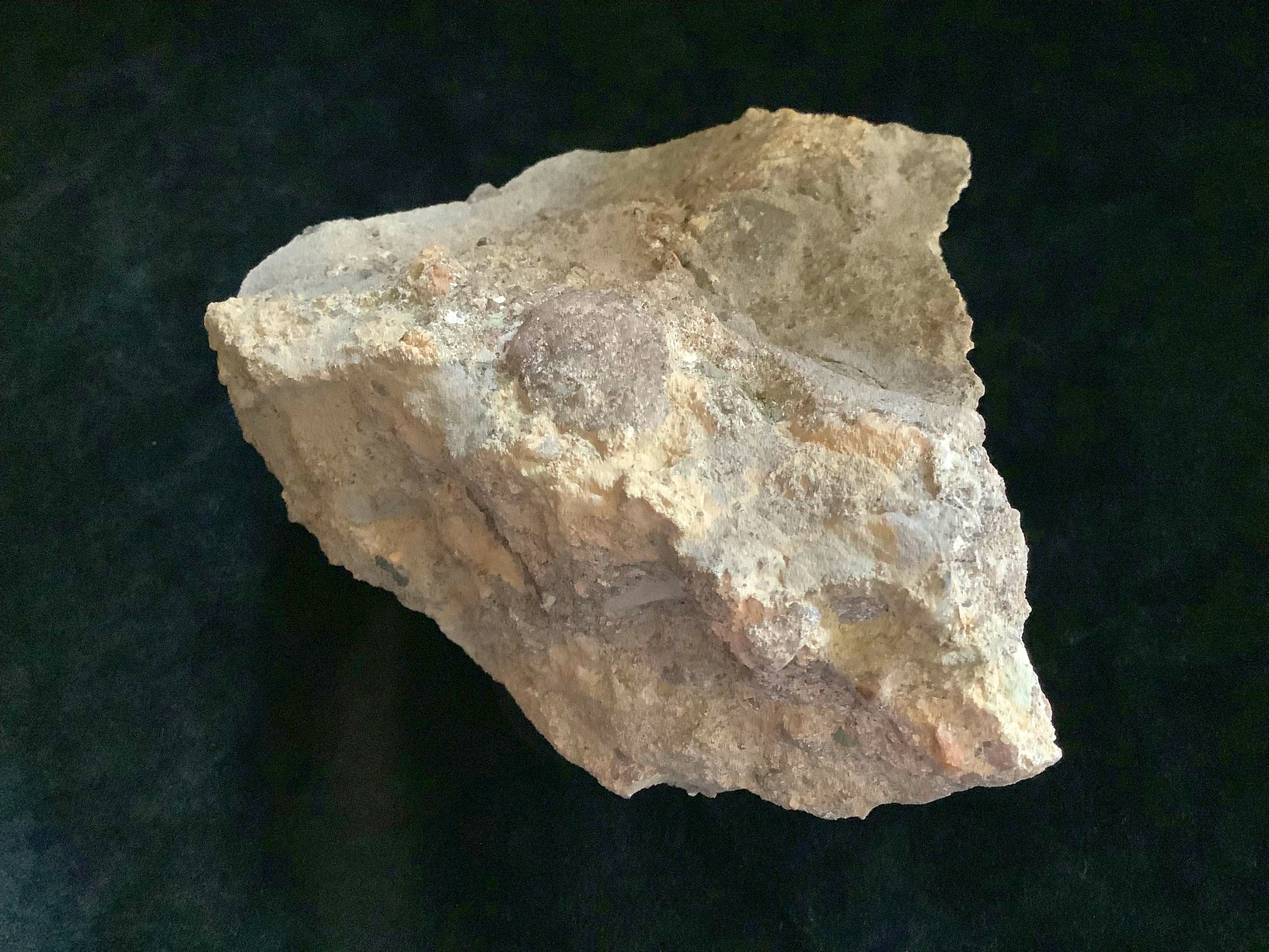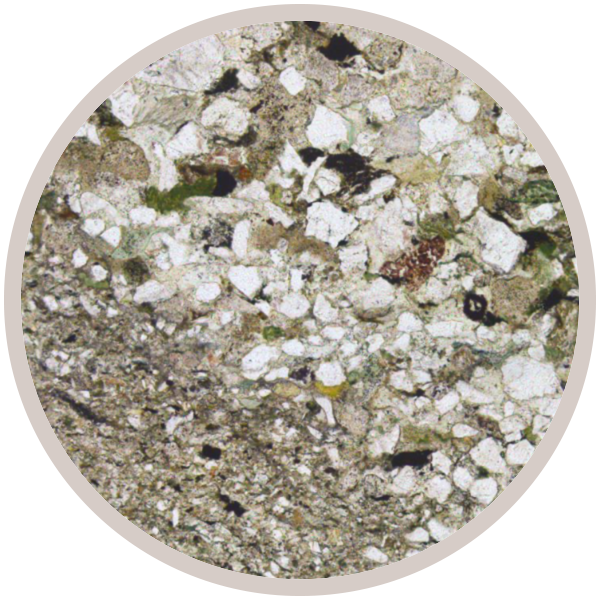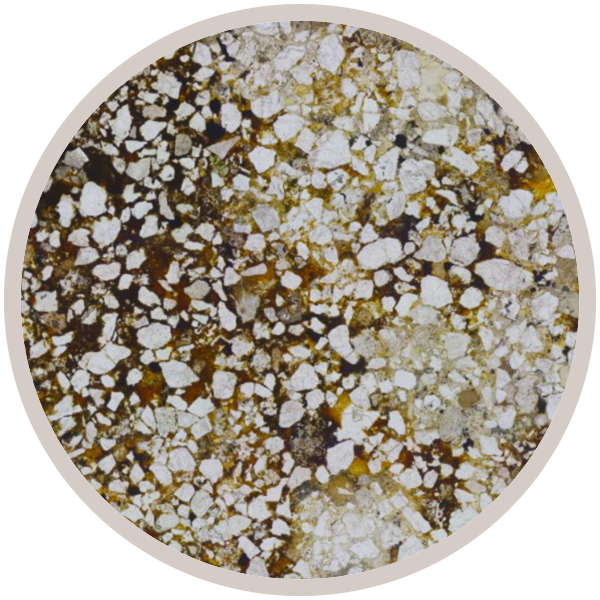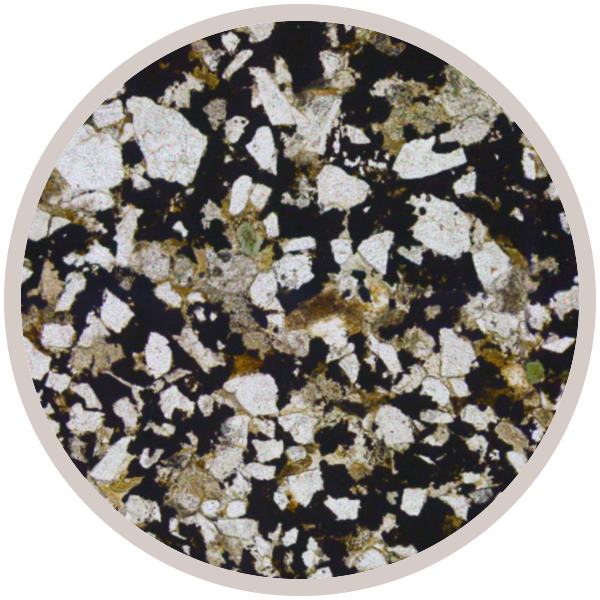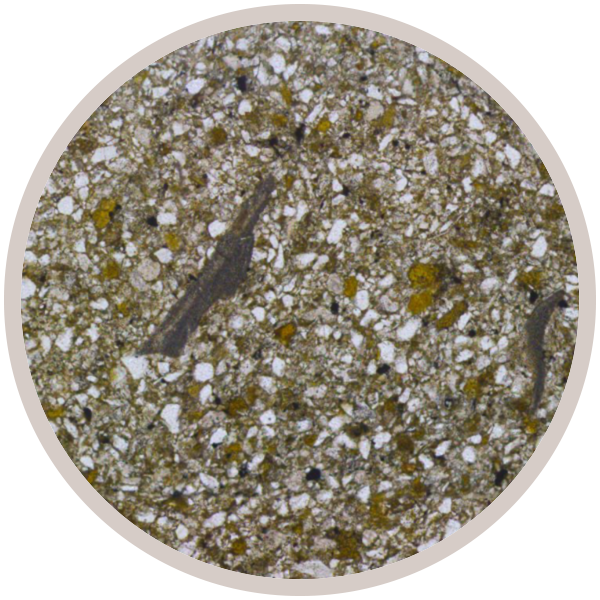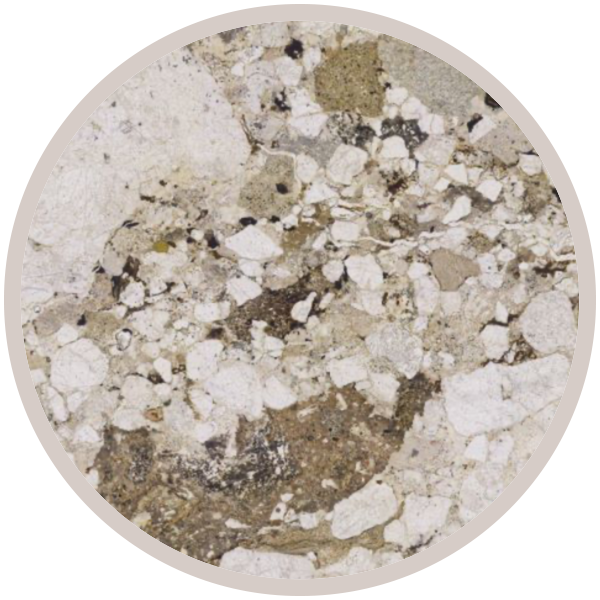
Fact sheet
A coarse channel sandstone with a wide variety of clasts, collected from Doulton's Claypit.
This sandstone was deposited in a river channel within a low-lying, deltaic environment when the region lay near the equator. These deltas were thickly forested with trees whose fossil remains can be found in some of the strata.
In thin section, the texture is so coarse that sedimentary bedding cannot be identified. The sandstone is very poorly sorted and is quite immature both texturally and compositionally. A wide variety of grains includes clear quartz, dusty feldspar, chlorite, opaque oxides and many lithic fragments from quartzites, sandstones, siltstones to brown or greenish mafic rock-types; some sedimentary clasts even show discernible sedimentary lamination. Grains are subrounded to angular.
A notable feature of this rock is the abundance of tiny (most <50 microns), very high relief grains with very high birefringence and bright interference colours. These occur singly and also as clusters in the matrix between larger grains. These are 'heavy minerals', so called because of their high density. They tend to become concentrated in patches on the streambeds of river channels, where finer and less dense grains are transported away, leaving the largest and heaviest grains behind. Some of these (perhaps most) are zircon, but other accessory minerals rich in heavy elements likely occur.
Fuzzy, pale brown interstitial material is likely fine grained clays, with occasional patches of pale green chlorite.
This sample was collected as part of the 'Macro to Micro' project.
This Collection showcases the geodiversity of a classic geological site: the Saltwells National Nature Reserve in the West Midlands.
As well as displaying thin section and hand specimen views along with information setting them in the context of their landscapes, we also include perspectives and creative responses to the geological heritage of the sites from the local community.
| Explore the stories of the rock layers at Saltwells and Wren's Nest NNRs, designed by students at King Edward VI School, Stourbridge: |
This Collection was made possible by funding awarded to the 'Macro to Micro' project by the Natural Environment Research Council (NERC) under their 'Growing Roots' scheme.
